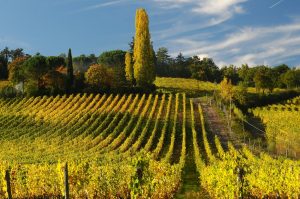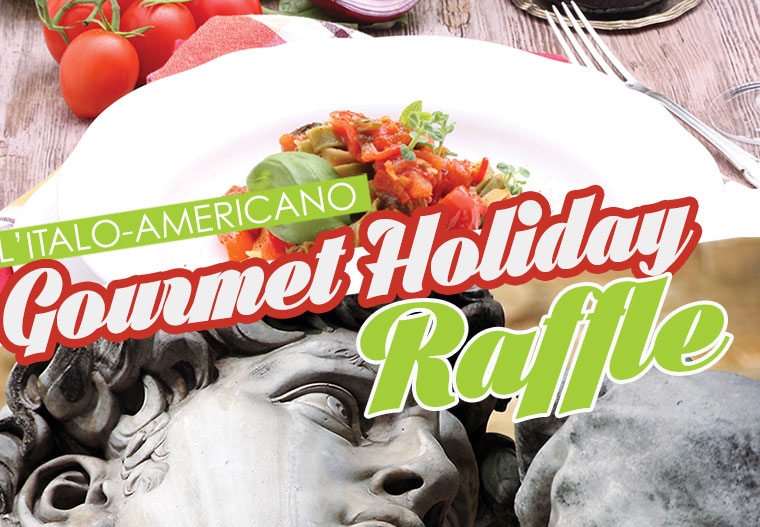The wine journey is often filled with things unexpected.
Learning that at least some portion of Malvasia Nera in Tuscany is likely the popular Spanish variety known as Tempranillo issued me a measure of unexpected surprise. Indeed, a molecular study in 2009 confirmed that Tuscan samplings of black Malvasia presented the molecular profile of Tempranillo.
But, my surprise was perhaps not as great as that of Tuscan winemaker Leonardo Beconcini when he discovered ancient Tempranillo vines on his property.
Through time, evolution, and the process of adapting to a new home, Beconcini’s Tempranillo finds its Tuscan differentiation, giving interesting, high quality wines of character and depth.

But, before we continue on with our discussion, I shall ask of you an important accommodation: please navigate yourself to the nearest map and locate the town of San Miniato, Italy. Geographically and historically, San Miniato is something of a portal for what follows here about Tempranillo. And it is home to the small family wine estate of Pietro Beconcini where I sat with Leonardo and the estate’s indefatigable ambassador Eva Bellagamba, discovering the beauty of Beconcini’s Tempranillo, an expression of that variety seemingly tied to San Miniato.
OK. Ready?
Here we go.
Interestingly, Tempranillo has apparently been growing in Tuscany for centuries, at times promiscuously planted among other varieties like Sangiovese, as was the case at Beconcini. It wasn’t until fairly recently, however, that, through scientific technology, the connection to Tempranillo had been established.
Over time, Tempranillo became highly adapted to its local Tuscan environment, often exhibiting better growing behavior than other selected and well-known varieties of the area. In talking with Beconcini and Bellagamba, they noted that, “Our Tempranillo is so well adapted here in San Miniato that, after centuries of presence, it’s actually a joy to cultivate. Our ancient Tempranillo grapes express themselves so well and in such a natural way.”
One wonders, of course, how Tempranillo vines might have found their way to Italy in the first place. Leonardo, a tireless researcher of Tempranillo history, has an interesting theory. The Via Francigena, a historic byway that served daily individual travelers, pilgrims, priests, families, etc., on their way to Rome, passes right through his property, indeed alongside a Tempranillo vineyard. Beconcini points out that the two main routes of Via Francigena originated in Canterbury, England and Santiago di Campostela in Spain. His hypothesis suggests that Tempranillo vines, or more likely, seeds – easier to carry over long journeys – arrived to San Miniato from Spain brought by travelers of Via Francigena.
No matter how Tempranillo found its way to San Miniato, suffice it to say that I am quite happy it has arrived. The Tempranillo wines I tasted at Beconcini’s estate were sensational, maintaining varietal smoothness yet displaying archetypal Tuscan acidity. The wines distinguish themselves even further with intense, terroir-driven minerality and drink with solid Tuscan genuineness.
Beconcini’s wine Vigna alle Nicchie, so named for the vineyard which lies upon a bed of fossil seashells, is sourced from un-grafted, century-old Tempranillo vines whose grapes undergo a regime of drying for an extremely limited production of 3,000 bottles. The estate’s IXE, a wine deriving its name from the Tuscan alphabet letter “X” – a reminder of the vine’s once unknown history – is sourced from new Tempranillo vineyards planted in 1997 from massal selected buds taken from the historic vineyard (27,000 bottles).
Leonardo’s work with Tempranillo remains as important as the wines. As Eva so aptly put it, “We are the last custodians of Tempranillo in Tuscany.” She informs me that Leonardo has, “…had the passion and patience to listen to this variety since the beginning of the ‘90’s.” From where I sit, whatever knowledge base we have around hands-on vineyard practices for Tempranillo in Tuscany can be attributable to Leonardo Beconcini.
In my post-visit correspondence with Leonardo and Eva, the pair offered that “Tempranillo in Tuscany is a very important tool to express something new and innovative from Tuscany while still maintaining a deep-rooted connection to the region.” I couldn’t agree more. Given its history and successful adaption to terroir, it would seem that Tempranillo has a historical right to be considered as a Tuscan variety.
And so, we come back to the wine journey and things unexpected: speaking of Tuscan Tempranillo, Beconcini and Bellagamba illuminate for me that it is “…this forgotten variety, lost in this part of Tuscany, that today expresses the best grapes of the estate. It is the most important goal of Leonardo to respect and exalt in agriculture the Naturalness that allowed this to happen.”
Tasting Note
Vigna alla Nicchie
Dark cherries, violets, notes of anise, thyme, cocoa, leather. Dense, supremely supple in the mouth, finishes with elegant, fine grained tannins.





























